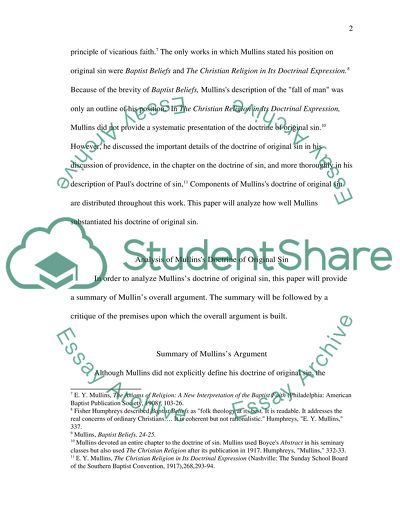Cite this document
(“Mullins' Doctrine of Sin Research Paper Example | Topics and Well Written Essays - 3250 words - 1”, n.d.)
Retrieved from https://studentshare.org/religion-and-theology/1428973-mullins-doctrine-of-sin
Retrieved from https://studentshare.org/religion-and-theology/1428973-mullins-doctrine-of-sin
(Mullins' Doctrine of Sin Research Paper Example | Topics and Well Written Essays - 3250 Words - 1)
https://studentshare.org/religion-and-theology/1428973-mullins-doctrine-of-sin.
https://studentshare.org/religion-and-theology/1428973-mullins-doctrine-of-sin.
“Mullins' Doctrine of Sin Research Paper Example | Topics and Well Written Essays - 3250 Words - 1”, n.d. https://studentshare.org/religion-and-theology/1428973-mullins-doctrine-of-sin.


